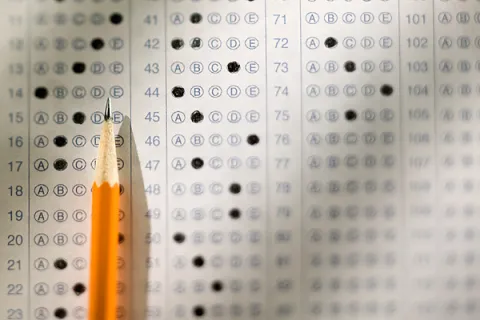The American Revolution was one of the most pivotal events in world history. Not only did it establish what would become the world’s foremost military, economic, and arguably ideological superpower, but it ushered in a new age of democracy and flipped the existing sociopolitical order on its head. It was an objectively remarkable event. How is it, then, that learning about historical events like this can become a tedious and even dull activity?
The answer can be found in a style of teaching aptly summarized as “Packets, Slideshows, and Graphic Organizers” (P.S.G.O.). You are familiar with these mediums––whether you are asked to watch a couple videos and summarize them, read and annotate an article, or painstakingly fill out a ‘note-catcher’ with questions that force the writer into meaningless redundancy, it’s a pretty effective way to get people to tune out. Students are engaged when the activities they partake in avoid repetitiveness, involve human interaction, allow creativity, and give the student a certain amount of freedom in how they complete the assignment. PSGO teaching removes every one of these factors.
Not only are activities like “guided readings” and “mind maps” so rigidly structured that they leave zero room for the student to perform any actual analysis, they are also great at teaching someone precisely how not to write. These types of assignments are often graded on completion—so once students learn that they just have to fill the boxes with enough semi-relevant answers to get a five-out-of-five, that is exactly what they will do. Answering a question like “What do you think the main idea is?” or “What similarities did you notice?” quickly becomes an exercise in writing as much shallow, meaningless filler as possible, simply to give the appearance of work. Graphic organizers, a slightly more structured part of PSGO work, have a similar effect:
Main Idea: Graphic organizers have a negative effect on writing because they make it formulaic, uninteresting, and overly structured. Evidence: According to Anny Fritzen Case, “graphic organizers can morph into weak proxies for writing that bore and frustrate students and give rise to misunderstanding or over-simplification.” Analysis: This quote shows that graphic organizers are not good for students. The word choice of “bore and frustrate” shows that they make students unproductive and unhappy. Link: Ultimately, to help students with their work, we should limit the use of graphic organizers.
I’m not saying that graphically-organized assignments are always problematic; they can sometimes be a useful way of synthesizing information. They are also a major part of almost every humanities course available—even in some of the best classes, they may represent a large portion of the work required. But for students to be engaged, work should exercise different parts of students’ skill sets: group work, presentations, art projects, or just good ol’ lectures are all effective alternatives. When surface level engagement is actually rewarded, critical thinking, analysis, and synthesis all disappear––and so does the joy of learning.








